Many fashions today use elastic waistbands. The elastic is visible and it not covered by fabric.
Use a stretch needle to sew the elastic. This will keep the little knobs of elastic from popping up.
Happy sewing.

Sewing & Selling
Many fashions today use elastic waistbands. The elastic is visible and it not covered by fabric.
Use a stretch needle to sew the elastic. This will keep the little knobs of elastic from popping up.
Happy sewing.
This interesting little foot works quite well on binding quilts. A new type of foot where the bottom edges are not level. This helps when the fabrics you are sewing aren’t the same height. I am using it for binding quilts although there must be many other uses.
When I first tried this foot, I thought it was backwards but of course, it was just me. It is designed to allow the bulk of the quilt to be on the left side of the machine.
The two quilts that I bound with this foot are going to be used a lot and needed a strong edge. Not being sure of my sewing skills, I sewed the binding to the wrong side and then wrapped it to the right side, where I could see I was sewing in the correct spot.
My first quilt, was a double side baby blanket, one side flannel and one side cotton fabric without any batting. I sewed the binding to the wrong side and brought the binding to the top side and sewed in place. Did the back look as good as the front? No, but it wasn’t to bad. If you are off it’s important to use a thread color to match your backing. The second one was good on both sides.
The last picture shows both side of the quilt which look the the same of both side.
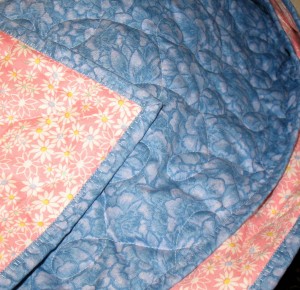
For Creative Vision Users: The 6.2 menu for specialty feet has lots of stitches that work with this foot. I used the 6.2.1 but I think next time I will adjust the stitch or select another one.
It helps to sew on the edge of the binding, not the quilt as that will make the back and front of the quilt match. This isn’t for heirloom quilts but it will work for everyday quilts that will get a lot of use. Please post if you have thoughts about this foot.
Happy Sewing (Hi Son)
SewNana
Creative Vision (from here out known as the CV) has a wonderful Icon button. Just in case someone reading this doesn’t know what a toggle icon is I will try and explain. (It is icon that will change from one function to another and then back again as it is touched.) Kind of cute really.
We have one on the CV, although I must admit I have used this machine for quite a while and didn’t know it was there. I will try and explain.
The first picture shows a straight stitch with the width button on the left and the length button on the right. We know on a straight stitch, then if we change the width button, we are moving the needle position, as there isn’t any width to a straight stitch.
Picture #2 shows the zig zag stitch 1.1.5 at it’s default size. We also know we can change the width by using the left hand button.
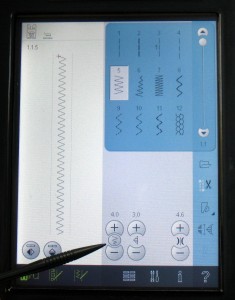
But now look at picture #3. It shows the same stitch, same size but it’s position has changed. The stitch will sew closer to the right, as the stitch has been moved closed to the right which will sew closer to the right edge of the pressure foot. Look closely and you can see that the width button is pushed in and now shows a different icon. So by touching and toggling back and forth on decorative stitches, we have the option to not only change the width but also where it stitches. How fun………
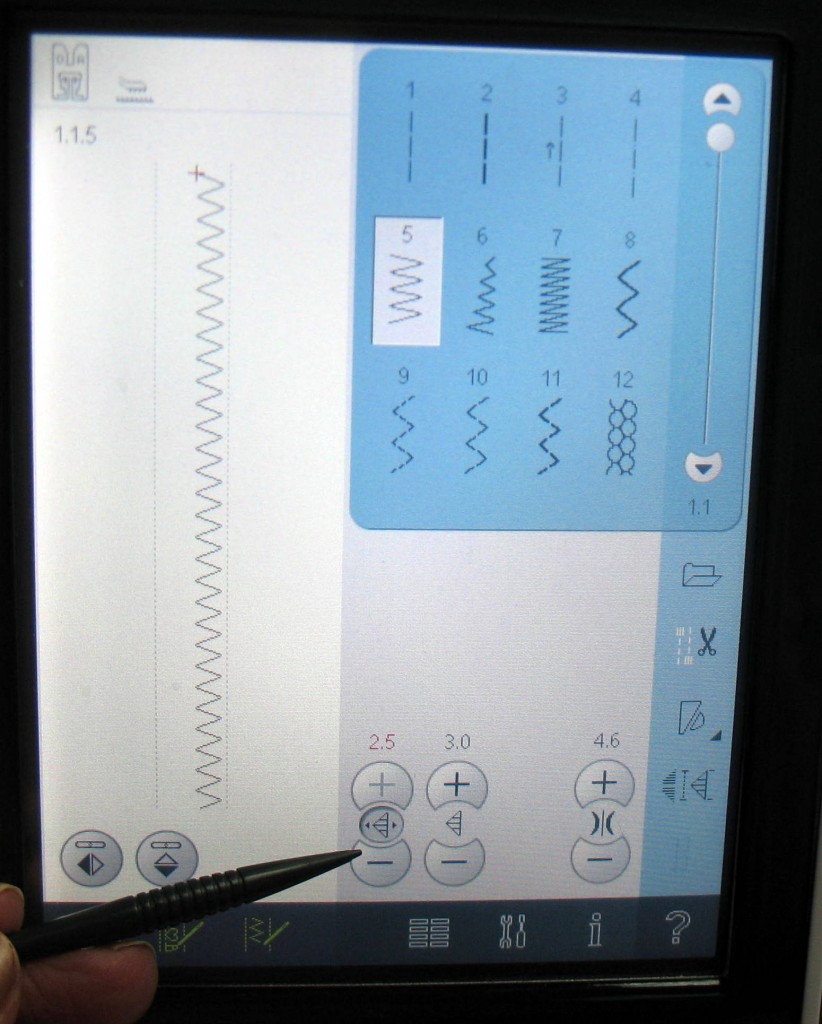
Maybe we have more of these but I’m not sure. Help anyone?
It’s Sunday night and my son may be checking to see if I am posting to this site so I must hurry and get something going.
Oh yes, Happy Sewing, and Carl enjoyed watching the race last night.
SewNana
Have you ever needed to hem jeans or cuffs and know it will be hard, if not impossible to replicate the hem. This technique commonly used on jeans also works well for other ready made items. The jacket below was made with french terry.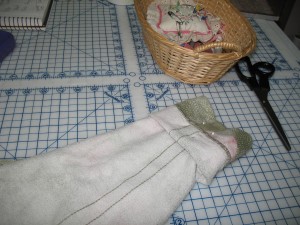
To do this technique, you will be making a tuck above the hem and sewing the tuck right above the hem that was on the original garment. The tuck is folded into the sleeve and checked to see if the new length is correct.
Baste the tuck together being careful to only baste the tuck. If you are fearless you can try just pinning.
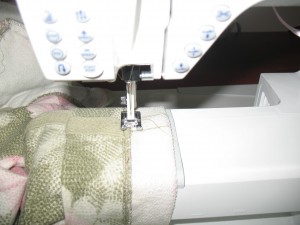
Trim the fabric that you have tucked and finish the raw edges. If it is a knit,it isn’t necessary to finish the raw edge.
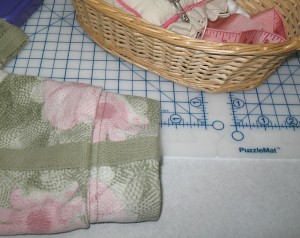
The original hem is the still there. That is the stitching that is visible. It is a cover stitch but part of the sleeve blocks the view
.